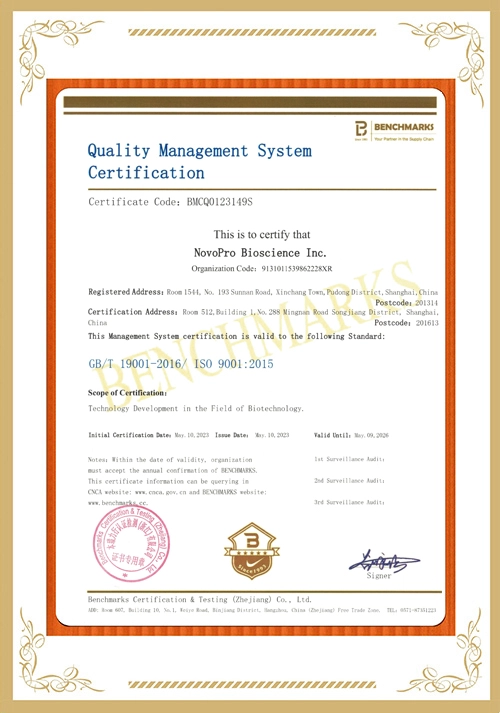-
Product Name
Anti-CAMKV antibody
- Documents
-
Description
Rabbit Polyclonal to Human CAMKV
-
Tested applications
ELISA, IHC-P, ICC/IF, IF
-
Species reactivity
Human CAMKV
-
Alternative names
1G5 antibody; MGC8407 antibody; 1G5 antibody; VACAMKL antibody; 1G5 antibody; BB074618 antibody; BC017634 antibody; 1G5 antibody; BB074618 antibody; BC017634 antibody; Camkv antibody; CAMKV antibody; MGC118008 antibody; MGC28873 antibody; VACAMKL antibody
-
Isotype
Rabbit IgG
-
Preparation
Produced in rabbits immunized with purified, recombinant Human CAMKV . CAMKV specific IgG was purified by Human CAMKV affinity chromatography.
-
Clonality
Polyclonal
-
Formulation
0.2 μm filtered solution in PBS
-
Storage instructions
This antibody can be stored at 2℃-8℃ for one month without detectable loss of activity. Antibody products are stable for twelve months from date of receipt when stored at -20℃ to -80℃. Preservative-Free.
Sodium azide is recommended to avoid contamination (final concentration 0.05%-0.1%). It is toxic to cells and should be disposed of properly. Avoid repeated freeze-thaw cycles. -
Applications
ELISA: 0.1-0.2 μg/mL
This antibody can be used at 0.1-0.2 μg/mL with the appropriate secondary reagents to detect Human CAMKV.
IHC-P: 0.1-2μg/mL
ICC/IF: 0.5-3μg/mL
-
Background
CaM kinase-like vesicle-associated protein, also known as CAMKV, is a peripheral membrane protein and Cytoplasmic vesicle membrane protein which belongs to the protein kinase superfamily and CAMK Ser/Thr protein kinase family. CAMKV contains one protein kinase domain. It is predominantly observed in association with the plasma membrane of soma and in neurites, both axons and dendrites. CAMKV may be associated with vesicular structures. It does not appear to have detectable kinase activity. Protein kinases are a group of enzymes that move a phosphate group onto proteins, in a process called phosphorylation. Protein kinases function as an on/off switch for many cellular processes, including metabolism, transcription, cell cycle progression, cytoskeletal rearrangement and cell movement, apoptosis, and differentiation. They also function in embryonic development, physiological responses, and in the nervous and immune system. Abnormal phosphorylation causes many human diseases, including cancer, and drugs that affect phosphorylation can treat those diseases. The protein kinase domain is a structurally conserved protein domain containing the catalytic function of protein kinases. Protein kinases play a role in a mulititude of cellular processes, including division, proliferation, apoptosis, and differentiation. Phosphorylation usually results in a functional change of the target protein by changing enzyme activity, cellular location, or association with other proteins.
Related Products / Services
Please note: All products are "FOR RESEARCH USE ONLY AND ARE NOT INTENDED FOR DIAGNOSTIC OR THERAPEUTIC USE"

